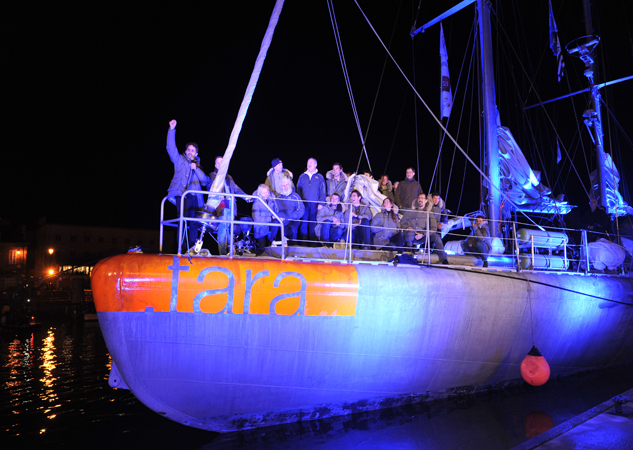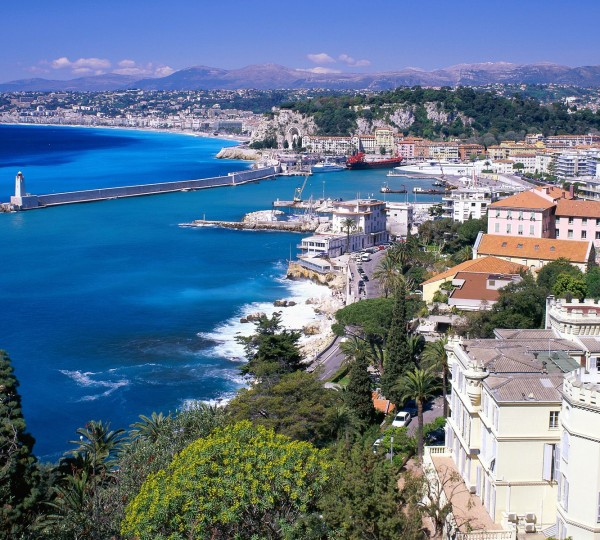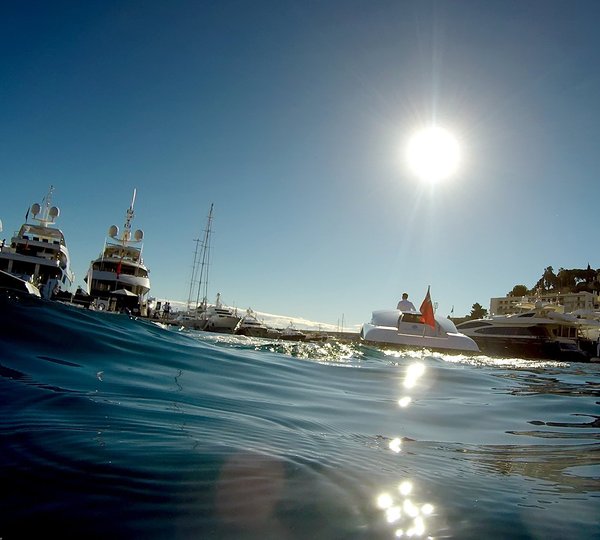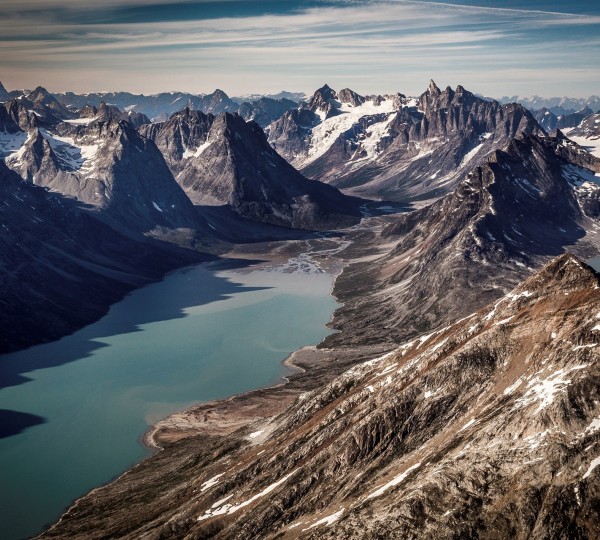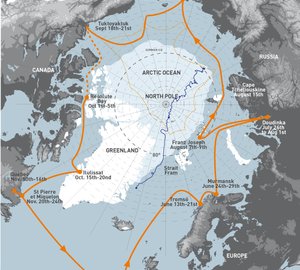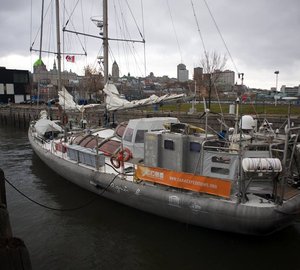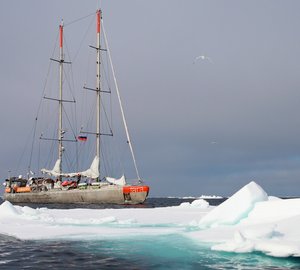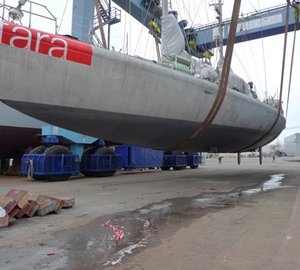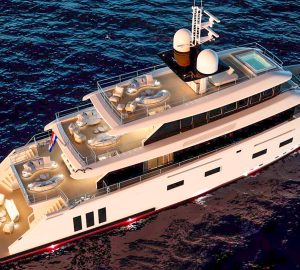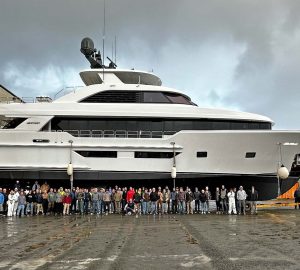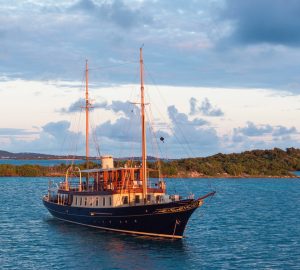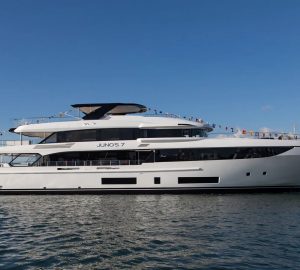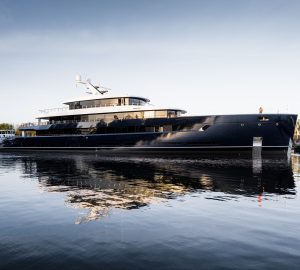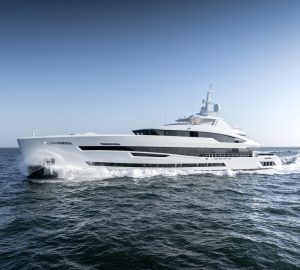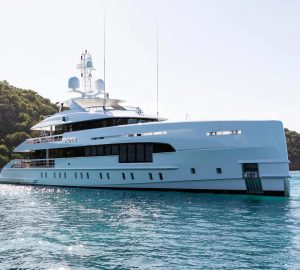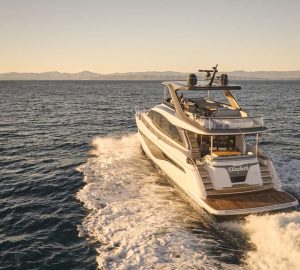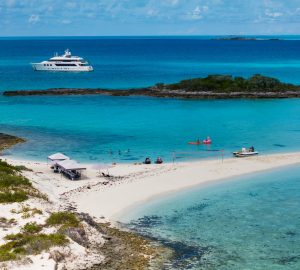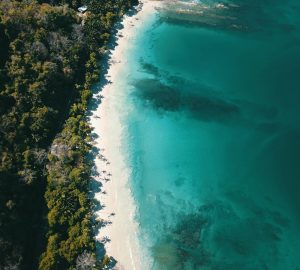Following the 7-month Tara Oceans Polar Circle expedition around the North Pole, Tara yacht returned to her home port in Lorient, France, on December 7, 2013. The schooner docked at 6:30 in the marina, especially illuminated in honor of sailing yacht Tara’s return.
The scientific mission in the Arctic Ocean covered 25,000 kilometers, and traversed the Northeast and Northwest passages in a single season. Supported by agnès b., the Albert II of Monaco Foundation, CNRS, CEA, EMBL, Lorient Agglomeration, EDF Foundation and other private and public partners, the expedition’s goal was to research plankton biodiversity in the Arctic.
By circumnavigating the Arctic Ocean, Tara Oceans Polar Circle completes the goals of the Tara Oceans expedition (2009-2012): to collect plankton in all the world’s oceans, in order to understand how oceans are reacting to the major changes taking place. In addition, other issues were studied, including an assessment of mercury levels, and also the concentration of plastic particles in the sea.
55 scientific sampling stations were carried out under extreme conditions, and 5,000 samples of plankton were collected. “We were able to carry out the entire mission beyond our expectations — with a half-dozen more sampling stations than originally planned,” explains Eric Karsenti, the scientific director of the mission.
Analysis of the samples will continue in laboratories for years to come, but as of 2013 (just 4 years after the start of Tara Oceans) 8 scientific publications have already appeared. These articles are devoted to very precise subjects. The 7-year Oceanomics research program began in March 2013 with thousands of samples collected during the Tara Oceans and Tara Oceans Polar Circle expeditions. The data will be organized and used to understand how plankton biodiversity and the oceanic carbon pump function. In the long term, certain compounds will be identified for the pharmaceutical field. Raw data has been made available online to the scientific community.
“It is surely one of the most important achievements of this kind of expedition,” continues Eric Karsenti. “It’s almost like a library, where researchers around the world can work on the samples, without anyone knowing what will be the outcome.”
During recent months,Tara Expeditions appealed to policy makers and the general public concerning the most urgent environmental issues in the Arctic, by publishing “A Plea for the Arctic.”
Nearly 10,000 students followed the expedition via the website “Echos d’escale” where they could discover the key environmental issues affecting the Arctic. Older students can continue exploring by participating in the program, “From boat to laboratory” which allows them to use real scientific data, and be in contact with researchers who are examining the collected samples.
KEY STATISTICS OF THE TARA OCEANS POLAR CIRCLE EXPEDITION
55 sampling stations, including 18 long stations, at depths down to 1,000 meters – 5,000 samples – 23 scientific instruments on board – 11 stopovers – 5 countries visited – 202 days of expedition – 3 captains relayed each other: Loïc Vallette, Samuel Audrain and Martin Hertau – 57 people took turns aboard Tara including 40 scientists, and 17 crew members – lowest recorded temperature: -8° C in the Canadian Arctic in September – highest recorded temperature: 29° C in Dudinka (Russia) in July – the northernmost position attained: N 080° 48′- E 047° 41′ at Franz Josef archipelago (Russia)
10 YEARS OF COMMITMENT
10 years ago, with the leadership of Etienne Bourgois and the support of agnès b, the Tara Expeditions project was conceived to promote the protection of the oceans and thus the planet. During this last decade, a lot of water has flowed under Tara’s round hull. 6 short campaigns, each several months long, were conducted between 2004 and 2006 with artists and scientists aboard, from Greenland to Antarctica, before the launch of 3 major missions devoted to climate and marine biodiversity: Tara Arctic (2006 – 2008), Tara Oceans (2009 – 2012) and Tara Oceans Polar Circle (2013). Ecology needs more science. The next decade will be crucial for making major decisions on climate change.
For the entire Tara Expeditions team, the coming years will be rich in discoveries and full of promise.
TARA’S FUTURE: TARA-MEDITERRANEAN, May to October, 2014
After more than 4 years sailing around the world and the Arctic, Tara is preparing a mission to raise awareness concerning the Mediterranean Sea, cradle of our civilization. Continuing our actions in favor of more sustainable development, this mission will be the occasion for Tara Expeditions, along with local and regional associations, to focus attention on the many environmental issues in the Mediterranean. During these 5 months, Tara Expeditions will also make public the initial results of the Tara Oceans Expedition (2009-2012).
The main partners of Tara Oceans Polar Circle:
agnès b., Fondation Prince Albert II de Monaco, Lorient Agglomération, CNRS, EMBL, GENOSCOPE – CEA, ENS, UPMC, TAKUVIK (Canada, Univ. Laval & CNRS), Shirshov Institute of Oceanology (Russia), King Abdullah University of Science and Technology (Saudi Arabia), Fondation EDF, NASA, ACCESS-iAOOS, the laboratories of the Tara Oceans Expedition (OCEANOLOGY consortium), Région Bretagne, IUCN et UNESCO – Intergovernmental Oceanographic Commission.

